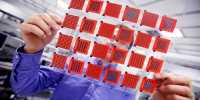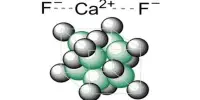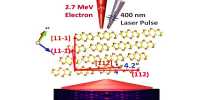Scientists Develop a way to pull carbon dioxide out of exhaust streams
The electrically switchable system could continuously separate gases without the need for moving parts or wasted space. Exhaust gas cleaning is a key process needed for a wide range of industrial plants for reducing pollutant emissions. A new system developed by chemical engineers at MIT could provide a way of continuously removing carbon dioxide from a stream of waste gases, or even from the air. Different types of pollutants that cause the greenhouse effect are produced in combustion media such as fly ash, NOx, SOx, CO2, acid gas, and dioxins and furans (PCDD/F) requiring a variety of processes for the separation of these pollutants from the exhaust gas. The key component is an electrochemically assisted membrane whose permeability to gas can be switched on and off at will, using no moving parts and relatively little energy. Carbon dioxide (CO2) emissions are believed to be a major contributor to global warming.
“The exhaust gas cleaning process is a multistep system where the first step is usually fly ash separation. The device makes use of a redox-active carbon-absorbing material, interspersed between two switchable gas gating membranes.”
At the Massachusetts Institute of Technology, chemical engineers have developed a new system that could offer a means to constantly eliminate carbon dioxide from a flow of waste gases, or even from the atmosphere. The membranes themselves, made of anodized aluminum oxide, have a honeycomb-like structure made up of hexagonal openings that allow gas molecules to flow in and out when in the open state. However, the gas passage can be blocked when a thin layer of metal is electrically deposited to cover the pores of the membrane. The work is described in the journal Science Advances, in a paper by Professor T. Alan Hatton, postdoc Yayuan Liu, and four others. The main component of the system is an electrochemically supported membrane, the permeability of which to gas can be altered at will, with no moving parts and comparatively little energy usage.
The exhaust gas cleaning process is a multistep system where the first step is usually fly ash separation. This new “gas gating” mechanism could be applied to the continuous removal of carbon dioxide from a range of industrial exhaust streams and from ambient air, the team says. They have built a proof-of-concept device to show this process in action. Common technologies used for dust separation from exhaust gas include cyclones, electrostatic precipitators, and filters.
The device makes use of a redox-active carbon-absorbing material, interspersed between two switchable gas gating membranes. The device uses a redox-active carbon-absorbing material, sandwiched between two switchable gas gating membranes. The sorbent and the gating membranes are in close contact with each other and are immersed in an organic electrolyte to provide a medium for zinc ions to shuttle back and forth. The membranes have been developed using anodized aluminum oxide, feature a honeycomb-like structure with hexagonal openings that enable gas molecules to stream in and out when it is in the open state. These two gating membranes can be opened or closed electrically by switching the polarity of a voltage between them, causing ions of zinc to shuttle from one side to the other. The ions simultaneously block one side, by forming a metallic film over it, while opening the other, by dissolving its film away.
When the sorbent layer is open to the side through which the waste gases flow, the material immediately soaks up carbon dioxide until reaching its capacity. Then, the voltage can be interchanged to block off the feed side and open the other side through which a concentrated stream of almost pure carbon dioxide is discharged.
By building a system with alternating sections of the membrane that operate in opposite phases, the system would allow for continuous operation in a setting such as an industrial scrubber. At any one time, half of the sections would be absorbing the gas while the other half would be releasing it.
The researchers’ key innovation was using electroplating as a way to open and close the pores in a material. Along the way, the team had tried a variety of other approaches to reversibly close pores in a membrane material, such as using tiny magnetic spheres that could be positioned to block funnel-shaped openings, but these other methods didn’t prove to be efficient enough. Metal thin films can be particularly effective as gas barriers, and the ultrathin layer used in the new system requires a minimal amount of the zinc material, which is abundant and inexpensive.
“It makes a very uniform coating layer with a minimum amount of materials,” Liu says. One significant advantage of the electroplating method is that once the condition is changed, whether in the open or closed position, it requires no energy input to maintain that state. Energy is only required to switch back again.
Potentially, such a system could make an important contribution toward limiting emissions of greenhouse gases into the atmosphere, and even direct-air capture of carbon dioxide that has already been emitted.
















